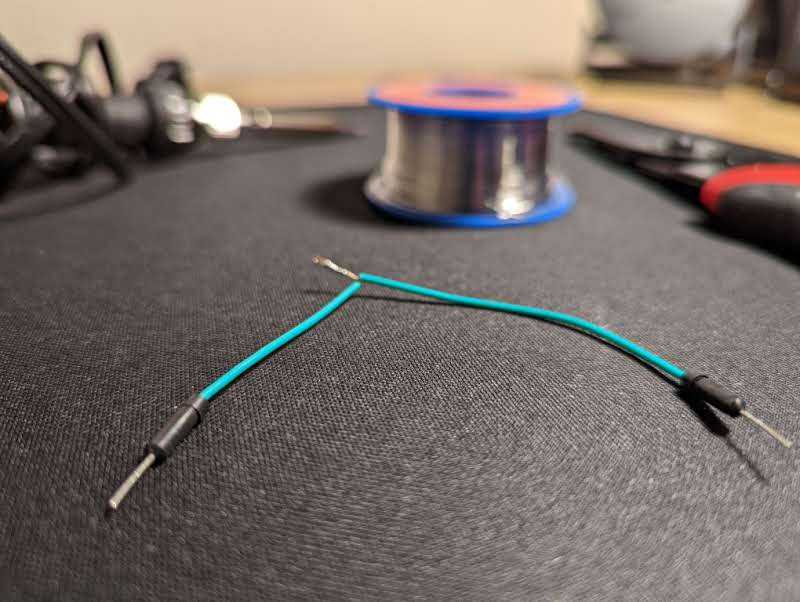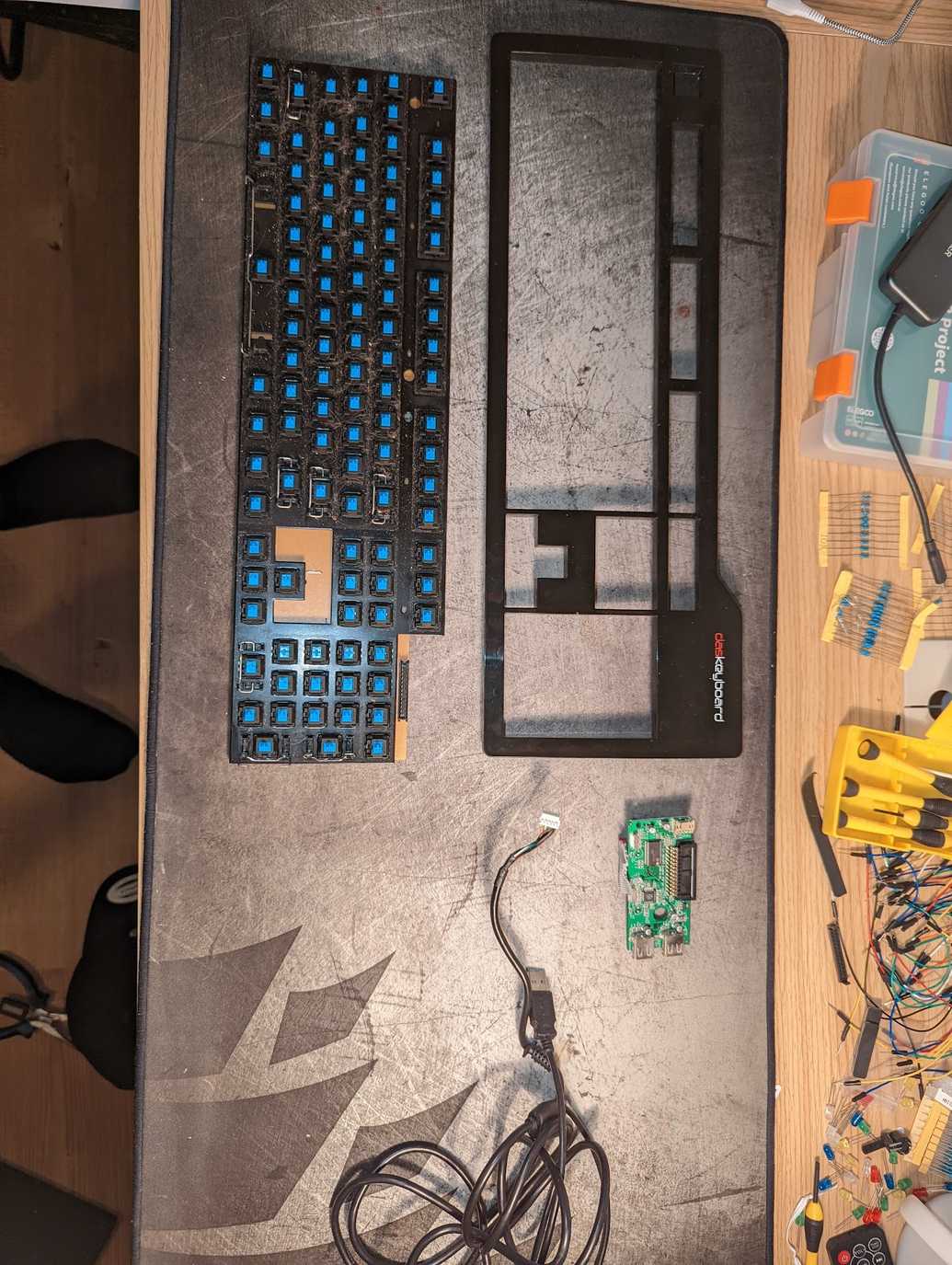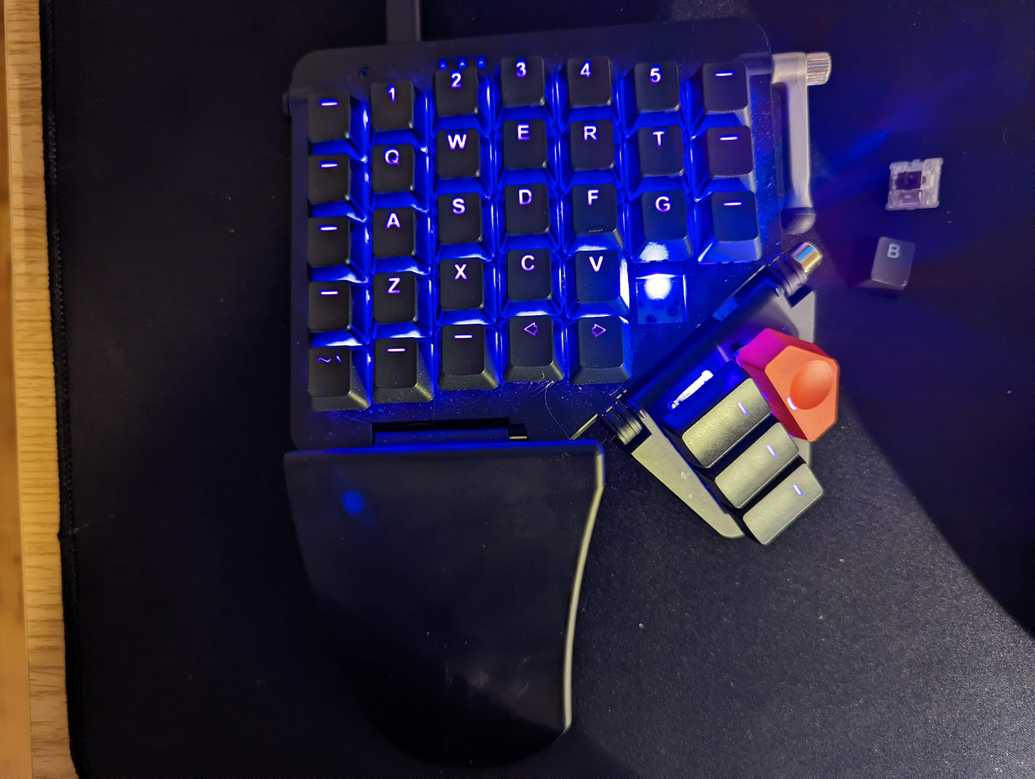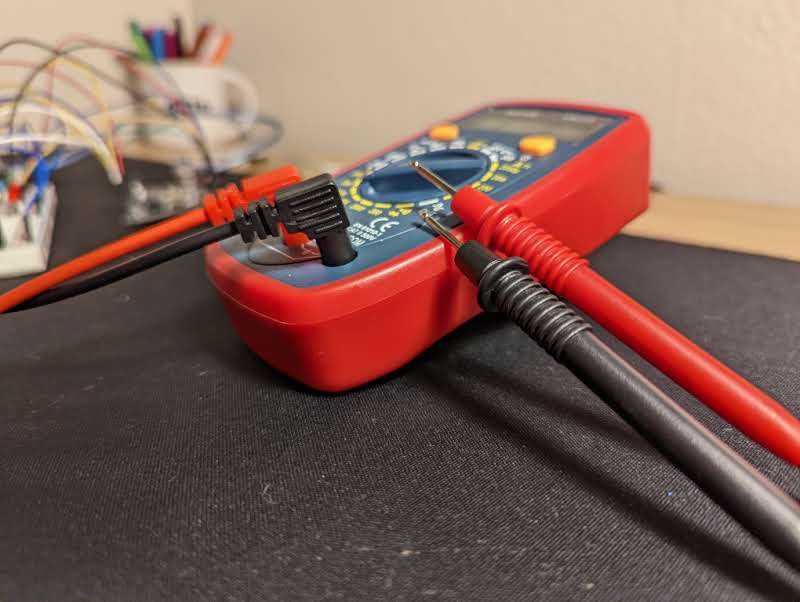Soldering Irons, Multimeters, Photoresistors -- Oh my!
January 17, 2022
It's been 10 days since my last blog post, and they've been pretty busy! I have a series of miscellaneous updates, so I'll start with the most obviously interesting ones and iterate towards what I roughly perceive to be the least interesting.
I've made a couple of new projects
I just finished creating my largest project yet (original in design and implementation, though not in concept): an electronic Simon Says game! I'm probably going to create an entire blog post (and maybe video?) about this, so for now, here's a short video of my 4 year old playing the finished product:
(code will be linked in follow-up post)
Prior to that, my 2nd ever novel project was a super primitive audio player. Here's a video of it playing Mary Had A Little Lamb (kind of):
Finally, the least cool project since it's not original: following a tutorial, I created a very tiny project to light up two different LEDs according to voltage changes through a photoresistor (which has a variable resistance according to the amount of light hitting it):
Code is shown in this tutorial
I bought a soldering iron
Soldering just feels like one of those skills that is really useful to have some sort of exposure to, and I'd never had any exposure to it, so I bought a dirt-cheap soldering iron off of Amazon.
I didn't have any major projects in mind, so I practiced by cutting apart a couple of jumper wires and soldering them back together. I didn't have any heatstrink wrapping to clean up my freshly soldered, wires with, but that's okay -- the finished product wasn't the important part.
Along with the iron, I got some basic tools for desoldering as well; in particular, I got a spool of desoldering wick and a few cheap desoldering pumps. I decided to take apart an old keyboard of mine that has been collecting dust in the closet for a couple of years; it's a mechnical Das keyboard with switches I always enjoyed, so I thought it would be a fun project to desolder the switches from the circuit board to reuse in my current daily driver (it's the Moonlander and it's pretty sweet - check it out!).
I watched some videos and jumped right into learning to desolder. As it turns out, I'm really terrible at desoldering, and I got literally nowhere with in my first night at attempting it. I couldn't get the desoldering pump to cleanly remove all of the solder, and the pump kept spitting out dried shards of old solder all over the joints I was trying to remove. I gave up and went to bed.
The next day, I did some additional research, watched more videos, and finally found success! I started to consistently clearing away all of the solder from the joints I attacked with my iron and solder sucker. However, it didn't occur to me until I tested a batch of freshly desoldered switches on my new keyboard that for my beloved RGB to shine through, I needed to use switches built with transparent housing; these didn't have it.
So, with that, I decided it wasn't worth the effort to spend hours desoldering switches that I wasn't going to use.
I bought a multimeter
From the material I've read and the videos I've watched, I've quickly learned that multimeter would be an essential tool in my electronics toolbox. I bought one at the same time that I purchased the soldering stuff, and it's been a game changer!
The most immediate impact the multimeter has had has been in how it has enabled me to more easily confirm which resistors are which. Those tiny colored bands just don't cut it for me, especially because I usually can't tell the difference between browns, reds, and oranges. I'm not sure if that's primarily a function of my eyesight or of poor manufacturing quality, but I'm hoping it's something that will get easier over time.
I'm soon hoping to do a much deeper study of circuit analysis, as that's an are that I still feel really weak in. Although I'm sure a ton of that will be raw theory, I think the multimeter will be essential for applying and confirming that theory once I've leveled up my understanding.
There are two mistakes I made with my multimeter purchase:
- It's not autoranging. This would've been helpful to get started with, especially since I sometimes use the wrong setting at first and have to fiddle with things a bit to get a valid reading.
- The probes the multimeter came with don't have clips, which can make it hard to hold stable connections for long enough to get readings. The small components constantly move around and the connection feels brittle.
Thankfully, both of these are minor and the fixes are simple. For the first one, I know I'll make less mistakes as time goes on and it's not a big deal. For the second one, I can just buy a separate set of probes / clips for cheap, problem solved!
I'm back to using the Arduino IDE
I love using VsCode because it has all of the features I use daily when programming for my day job. My last blog post was a tutorial walking through the process of switching from the Arduino IDE to VsCode.
The Arduino IDE is a little bit frustrating to work with as a professional developer because it has none of the features that I know exist to make my life easier. It's not a huge deal because I'm not writing software for the Arduino that will ever scale into a large system, but that being said, it's hard to go back to the Toyota Corolla when you're used to driving a BMW during the day.
However, to beat on the analogy a little bit more, the Toyota Corolla isn't known for being flashy: it's known for being reliable. The officially supported VsCode Arduino extension (which is still in preview, to be fair) has a number of frustrating intermittent issues related to detecting serial ports, opening/closing the Serial Monitor, and more.



